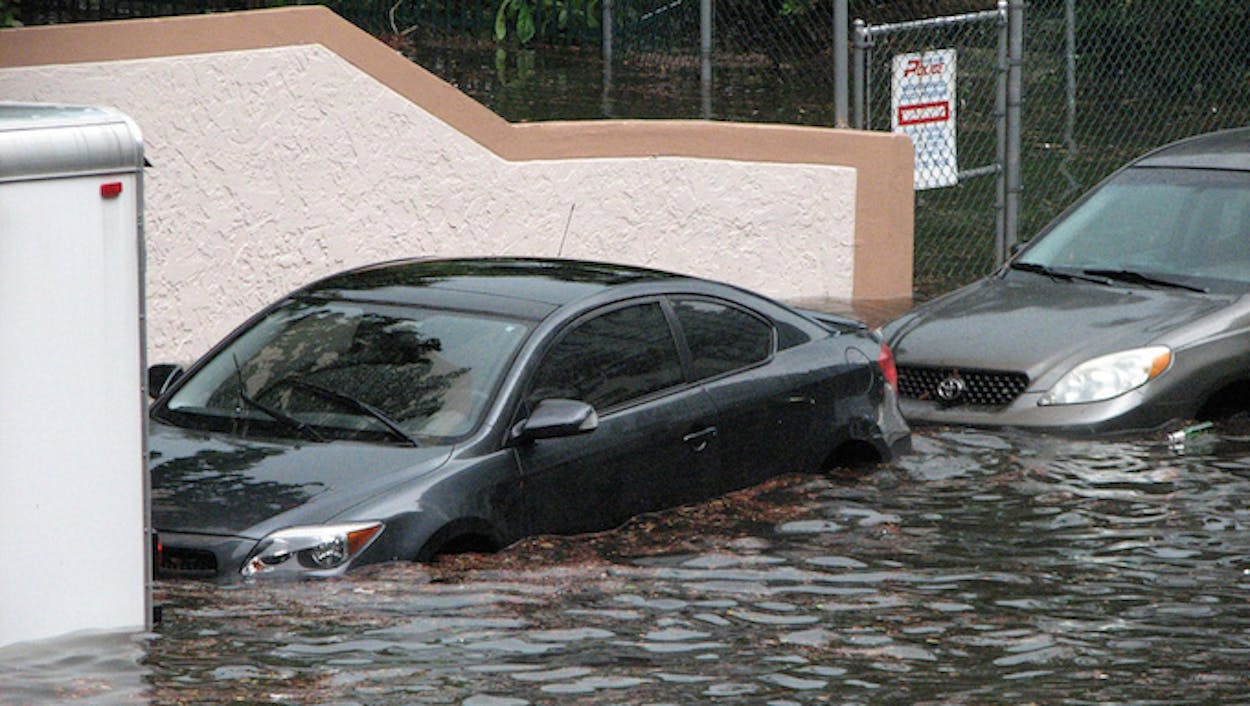As the cleanup from the flooding that took place around Memorial Day continues apace, there’s a new hazard to consider, at least for used car buyers: namely, how to avoid buying a car that looks great, but that secretly suffers from significant flood damage. As the Houston Chronicle reports, as many as 10,000 cars in Texas are believed to have been damaged by flood water in May:
One salvage lot operated by Copart in Houston has already gotten 2,500 vehicles rendered inoperable by water. With so many trashed cars on their hands, state officials and private groups have to work to make sure each vehicle bears the permanent mark of a salvaged automobile.
“The major concern we have is that we certainly do not want to see total-loss flooded vehicles re-entering the stream of commerce at some point down the road,” said Fred Lohmann, director of operations for southwest region of the National Insurance Crime Bureau.
With a little cosmetic work, flood damage can be hidden and a salvaged vehicle can be passed off as an acceptable used automobile “by someone with a little larceny in their heart,” Lohmann said. But water is pervasive, infiltrating each electronic and mechanical part and leaving lasting damage. A once-flooded car is almost guaranteed to break down—possibly in a dangerous place, like on a freeway.
Services like Carfax can tell you if a car has any reported flood damage, but not all damage gets reported. One can be cautious about buying high-risk cars—say, if it was registered in Louisiana by an owner who lived in New Orleans in 2005—but essentially all cars between Dallas, Austin, San Antonio, and Houston are at risk right now, which makes things tricky.
Gawker’s car blog Jalopnik has some tips a person can use to detect flood damage even if it was never officially reported: looking for moisture buildup in the instrument panel might be a clue, and don’t be shy about putting your nose down near the carpet to ensure that it doesn’t smell like mildew when you’re too close for Febreeze to hide the scent. Also, take a close look at things you might not otherwise check, like the wires under the dash, to see if there’s more rust than you might expect. Finally, Jalopnik recommends, “one place you should definitely look is in the trunk where the spare tire sits, most scam artists will clean the trunk carpet but will forget to lift it and take care of any damage underneath. If the spare tire area has any mud, water, or rust, this is most likely a water-damaged vehicle.”
That’s all sound advice, and there’s more out there. The DMV suggests that new upholstery in a car that otherwise wouldn’t warrant that sort of work is a tip-off, while Consumerist says to look at the head and tail lamps for moisture. But while nobody wants to get suckered into buying a flooded car, for people in certain situations, it’s not the worst idea in the world to take a chance on one with their eyes open.
Flooded cars have essentially no resale value—any car on a salvage title is worth very little—and if you’re in an accident, even if it’s not your fault, you’ll struggle to get much out of it from the insurance company. But for a cheap, short-term option for somebody who needs a car to commute with—or, say, a Winter Texan who wants an extra car in the state so they can fly down rather than drive—it might be worth haggling over one on a salvage title. The HowStuffWorks blog has some tips about that process:
Any car that’s been subjected to water should be sold well below market value, and unless the dealership can prove extensive restoration, you should be offered a dream deal. After all, when buying a flood-damaged car, you’re assuming a substantial financial risk that major repairs could be necessary. Make sure that you don’t pay more for the car than you’re willing to pay if the worst-case scenario occurs. Also know that when a car is flooded, typically, the manufacturer’s warranty is voided.








